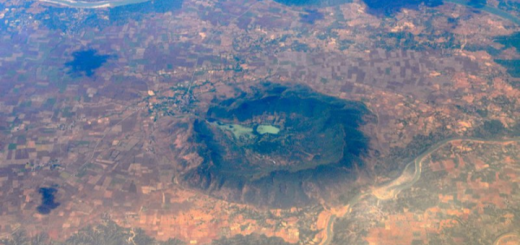About the Ganges River
• The Ganges is 1557 miles long (2506 km)
• The Ganges Valley, or basin, is 200 to 400 miles (322 to 644 km) wide
• The river starts in an ice cave on the southern slopes of the Himalayas, some 10,300 feet (3,140 meters) above sea level.
• It flows eastward and empties into the Bay of Bengal. Its mouths forms a vast delta. At the delta it is joined by the southward-flowing Brahmaputra River. Their combined delta is the largest in the world
• The delta begins more than 200 miles (322 kilometers) from the Bay of Bengal and lies mostly in Bangladesh. It is largely a tangled swampland
• There are two major dams on the Ganga. One at Haridwar diverts much of the Himalayan snowmelt into the Upper Ganges Canal, built by the British in 1854 to irrigate the surrounding land. This caused severe deterioration to the wateflow in the Ganga, and is a major cause for the decay of Ganga as an inland waterway
• The other dam is a serious hydroelectric affair at Farakka, close to the point where the main flow of the river enters Bangladesh, and the tributary Hooghly (also known as Bhagirathi) continues in West Bengal past Calcutta. This barrage, which feeds the Hooghly branch of the river by a 26 mile long feeder canal, and its water flow management has been a long-lingering source of dispute with Bangladesh,
• Sheer volume of waste – estimated at nearly 1 billion litres per day – of mostly untreated raw sewage
• Also, inadequate cremation procedures contributes to a large number of partially burnt or unburnt corpses floating down the Ganga, not to mention livestock corpses
•
• The Ganges Valley, or basin, is 200 to 400 miles (322 to 644 km) wide
• The river starts in an ice cave on the southern slopes of the Himalayas, some 10,300 feet (3,140 meters) above sea level.
• It flows eastward and empties into the Bay of Bengal. Its mouths forms a vast delta. At the delta it is joined by the southward-flowing Brahmaputra River. Their combined delta is the largest in the world
• The delta begins more than 200 miles (322 kilometers) from the Bay of Bengal and lies mostly in Bangladesh. It is largely a tangled swampland
• There are two major dams on the Ganga. One at Haridwar diverts much of the Himalayan snowmelt into the Upper Ganges Canal, built by the British in 1854 to irrigate the surrounding land. This caused severe deterioration to the wateflow in the Ganga, and is a major cause for the decay of Ganga as an inland waterway
• The other dam is a serious hydroelectric affair at Farakka, close to the point where the main flow of the river enters Bangladesh, and the tributary Hooghly (also known as Bhagirathi) continues in West Bengal past Calcutta. This barrage, which feeds the Hooghly branch of the river by a 26 mile long feeder canal, and its water flow management has been a long-lingering source of dispute with Bangladesh,
River Ganges
River Ganges or Ganga is sacred for the people of India. Originating in the Himalayan Mountain, Ganga flows over 2500 Kilometers before emptying into the Bay of Bengal. Given here is the Ganges Map. The Ganges River Map shows the course of flow of the River Ganges. This map of Ganges also shows the tributaries of the river. The river flows along the major cities of Kanpur, Allahabad, Varanasi, Patna etc… This is a printable Ganga Map free for download. Please link back to this website if you use it on your site.
The Ganges river has its source in the Himalayas, at Gaumakh in the southern Himalayas. The Ganga river has been declared as India’s National River. A species of dolphins found in the Ganges river know as the Ganges Dolphin was recently declared as the National Aquatic Animal of India. The Ganges Plains or the Ganga River Basin is one of the most fertile land in the world.
The Ganga river also offers ample opportunity for Tourism Development. River rafting in the Ganges is attracting lots of tourists.
Ganga is a sacred river of the Hindus. Hinduism personifies the river as Goddess Ganga and worships the river.Indian Cities located on the bank of Ganges River like Haridwar, Allahabad and Varanasi are also considered sacred by Hindus.
Here are a few basic facts about the Ganga River. This information will help you understand the Ganges at a glance.
Total Length of River Ganges 2,510 Kms (1,560 miles)
Average depth of Ganga River 52 Feet (maximum depth, 100 feet)
Place of Origin of Ganga River Foot of Gangotri Glacier, at Gaumukh, at an elevation of 3,892 m
Area drained by Ganges River (Ganges Plains) 1,000,000 Square Kilometres
Major Tributaries of Ganges Yamuna, Son, Kosi, Gandak, Gomati, Ghaghara, Bhagirathi etc…
Cities on the bank of Ganges Kanpur, Soron, Allahabad, Varanasi, Patna, Ghazipur, Bhagalpur, Mirzapur, Buxar, Saidpur etc..













 +91-94068 22273
+91-94068 22273 

